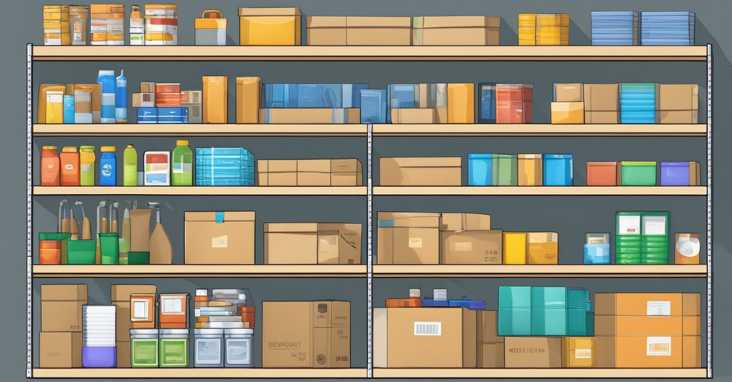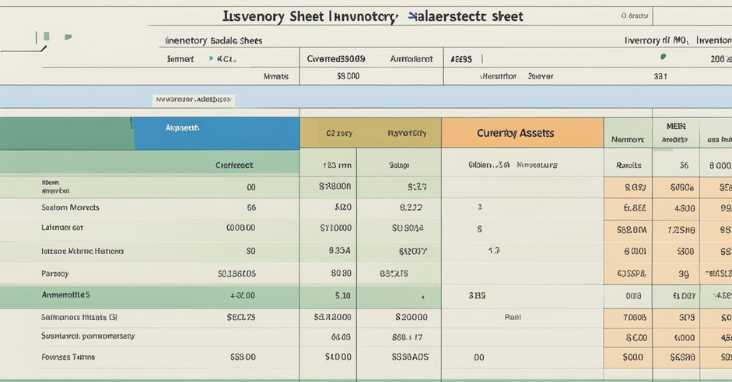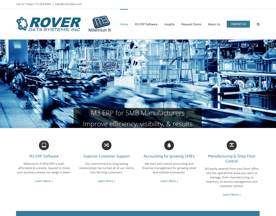Is inventory a current asset ? Yes, inventory is a current asset. It’s listed on the balance sheet as it is expected to be sold or used within one year, contributing to a company’s liquidity.
Inventory is a critical component of a business’s operations. It refers to the goods a company holds in stock and intends to sell to customers. Inventory management is crucial to ensure that the business has enough stock to meet customer demand while avoiding overstocking, which can lead to increased storage costs and obsolescence. One question that arises when discussing is inventory a current asset.

In accounting, a current asset is an asset that can be converted into cash within one year or one operating cycle, whichever is longer. Examples of current assets include cash, accounts receivable, and short-term investments. Is inventory a current asset? Yes since it can be sold within a year or an operating cycle. However, the classification of inventory as a current asset depends on the nature of the business and its inventory management practices.
Key Takeaways:
- Inventory is a critical component of a business’s operations and refers to the goods a company holds in stock and intends to sell to customers.
- Inventory is generally considered a current asset since it can be sold within a year or an operating cycle.
- The classification of is inventory a current asset depends on the nature of the business and its inventory management practices.
Understanding is Inventory a Current Asset
Definition and Importance of Current Assets
Current assets are resources that a company expects to convert into cash within one year or the operating cycle, whichever is longer. They are crucial in determining a company’s liquidity and ability to meet its short-term obligations. Inventory, along with cash, accounts receivable, and short-term investments, is one of the most common types of current assets.
Inventory represents the goods a company holds for sale or use in its operations. It includes raw materials, work in progress, and finished goods. Inventory management is essential for companies to maintain a balance between having enough inventory to meet demand and avoiding excessive inventory that ties up capital.
Classification of Inventory
Is Inventory a current asset because it is expected to be sold, used, or consumed within the next year. However, not all inventory is created equal. Companies must distinguish between finished goods and goods in progress, as well as between raw materials and supplies.
Finished goods are products that are ready for sale, while goods in progress are partially completed products that are still in the production process. Raw materials are the components that go into making finished goods, while supplies are consumables that are used in the production process.
Inventory in Financial Statements
Inventory is reported on a company’s balance sheet as a current asset. It is usually listed under the “current assets” section, following cash, accounts receivable, and short-term investments. Companies must regularly assess the value of their inventory to ensure that it is accurately reflected on their financial statements.
Inventory valuation methods, such as First-In-First-Out (FIFO) and Last-In-First-Out (LIFO), can affect a company’s financial statements. FIFO assumes that the first items purchased are the first sold, while LIFO assumes that the last items purchased are the first sold. Companies must choose a method and consistently apply it to avoid misleading financial statements.
According to Investopedia, inventory management is a critical aspect of a company’s operations. It affects a company’s profitability, cash flow, and customer satisfaction. Effective inventory management can help companies reduce costs, improve product quality, and increase sales.
Components of Inventory

Is inventory a current asset for companies. It is a representation of the company’s investment in the goods it produces or sells. Inventory can be classified into three categories: raw materials, work-in-progress, and finished goods.
Raw Materials
Raw materials are the basic components used in the production process. They include items such as wood, steel, plastic, and other raw materials that are transformed into finished goods. Raw materials are usually acquired from suppliers and are stored until they are needed for production.
Work-In-Progress
Work-in-progress (WIP) refers to goods that are in the process of being manufactured but are not yet finished. WIP includes partially assembled products, goods that are being processed, and products that are being tested. WIP is an important component of inventory because it represents the value of the work that has been completed on the product.
Finished Goods
Finished goods are products that are ready for sale. They are the end result of the production process and are ready to be shipped to customers. Finished goods include items such as electronics, clothing, and food products.
Inventory management is the process of overseeing the flow of goods from the time they are acquired to the time they are sold. Effective inventory management ensures that the company has enough inventory to meet customer demand without having too much inventory that ties up cash flow.
To learn more about is inventory a current asset and inventory management, check out this resource that provides a comprehensive overview of the topic.
Inventory Valuation Methods
First-In, First-Out (FIFO)
The FIFO method assumes that the first items purchased are the first items sold. This method is commonly used in businesses where inventory items have a short shelf life, such as food or drugs. FIFO is also used in businesses where the cost of goods sold (COGS) tends to increase over time, as the cost of the first items purchased will be lower than the cost of the last items purchased. This method results in a higher valuation of ending inventory and a lower COGS.
Last-In, First-Out (LIFO)
The LIFO method assumes that the last items purchased are the first items sold. This method is commonly used in businesses where inventory items have a long shelf life, such as electronics or furniture. LIFO is also used in businesses where the cost of goods sold tends to decrease over time, as the cost of the last items purchased will be lower than the cost of the first items purchased. This method results in a lower valuation of ending inventory and a higher COGS.
Weighted Average Method
The weighted average method calculates the average cost of all items in inventory and uses this cost to value ending inventory and calculate COGS. This method is commonly used in businesses where inventory items have a relatively stable cost over time. The weighted average method results in a valuation of ending inventory and COGS that is between the values calculated using FIFO and LIFO.
Specific Identification
The specific identification method values each item in inventory individually based on its unique cost. This method is commonly used in businesses where inventory items have a high unit value, such as jewelry or artwork. Specific identification results in a precise valuation of ending inventory and COGS, but requires a significant amount of record-keeping and is not practical for businesses with a large number of inventory items.
It is important for businesses to choose the inventory valuation method that best suits their needs and accurately reflects the value of their inventory. The choice of inventory valuation method can have a significant impact on a business’s financial statements and tax liabilities. Businesses should consult with a qualified accountant or financial advisor when selecting an inventory valuation method.
For more information on inventory valuation methods and is inventory a current asset, visit Investopedia.
Inventory and Liquidity
Current Ratio and Quick Ratio
Is inventory a current assets, yes it is significant which affects the current ratio and the quick ratio. The current ratio measures a company’s ability to meet its short-term obligations using its current assets. The quick ratio, on the other hand, measures a company’s ability to meet its short-term obligations using its liquid assets, such as cash equivalents and marketable securities.
A high inventory balance can negatively impact a company’s liquidity ratios. For instance, if a company’s inventory is not selling as quickly as expected, it can lead to an increase in the inventory balance, which in turn can reduce the current ratio and the quick ratio. Therefore, it is essential to maintain an optimal inventory level to ensure that liquidity ratios are not negatively impacted.
Inventory Turnover Ratio
The inventory turnover ratio measures how quickly a company sells its inventory and replaces it with new stock. A high inventory turnover ratio indicates that a company is selling its inventory quickly, which is generally a positive sign. A low inventory turnover ratio, on the other hand, indicates that a company’s inventory is not selling quickly, which can negatively impact liquidity ratios.
It is crucial to note that the inventory turnover ratio can vary significantly between industries. For instance, a retailer selling perishable goods may have a much higher inventory turnover ratio than a manufacturer of heavy machinery.
In conclusion, inventory plays a significant role in a company’s liquidity. Maintaining an optimal inventory level is crucial to ensure that liquidity ratios are not negatively impacted. Companies should also monitor their inventory turnover ratio to ensure that inventory is selling quickly.
For more information on inventory, liquidity and is inventory a current asset, please refer to this link with high authority on this topic.
Impact of Inventory on Business Operations

Cash Flow and Working Capital
Inventory management has a significant impact on a company’s cash flow and working capital. When a company carries too much inventory, it ties up cash that could be used for other purposes, such as paying bills or investing in growth opportunities. Conversely, if a company carries too little inventory, it risks stockouts and lost sales. Therefore, it is crucial for businesses to find the right balance between inventory levels and cash flow.
One way to manage inventory levels and improve cash flow is through the use of just-in-time (JIT) inventory systems. JIT systems allow companies to order inventory only when it is needed, reducing the amount of cash tied up in inventory. In addition, JIT systems can help companies reduce waste and improve efficiency, leading to cost savings and improved profitability.
Sales and Demand Forecasting
Effective inventory management is essential for accurate sales and demand forecasting. By tracking inventory levels and sales data, companies can identify trends and patterns in customer demand. This information can be used to make more accurate sales forecasts, which can help companies avoid stockouts and excess inventory.
In addition, companies can use inventory turnover ratios to measure the efficiency of their inventory management. By comparing the cost of goods sold to the average inventory level, companies can determine how quickly they are selling inventory. A high inventory turnover ratio indicates that a company is selling inventory quickly, while a low ratio may indicate that inventory is not moving as quickly as it should.
Risk Management
Inventory management also plays a critical role in risk management. Holding too much inventory can increase the risk of obsolescence or spoilage, while holding too little inventory can increase the risk of stockouts and lost sales. Therefore, it is essential for companies to continually monitor inventory levels and adjust their inventory management strategies as needed.
One way to mitigate inventory-related risks is through the use of safety stock. Safety stock is a buffer of inventory that companies hold to protect against unexpected demand or supply chain disruptions. By maintaining appropriate levels of safety stock, companies can reduce the risk of stockouts and lost sales.
Overall, effective inventory management is critical to the success of any business. By balancing inventory levels with cash flow, accurately forecasting demand, and managing risk, companies can improve profitability and achieve long-term success.
Here is a helpful resource on inventory management and is inventory a current asset.
Accounting and Regulatory Considerations

Generally Accepted Accounting Principles (GAAP)
Under Generally Accepted Accounting Principles (GAAP), inventory is considered a current asset. This means that it is expected to be sold or used up within the next year or operating cycle, whichever is longer. Companies are required to value their inventory at the lower of cost or market value. This ensures that inventory is not overstated on the balance sheet, which could mislead investors and creditors.
GAAP also requires companies to disclose their inventory valuation method in the footnotes to their financial statements. This is important because different valuation methods can result in significantly different inventory values. For example, using the first-in, first-out (FIFO) method can result in a higher inventory value than using the last-in, first-out (LIFO) method in an inflationary environment.
Internal Revenue Service (IRS) Regulations
The Internal Revenue Service (IRS) requires companies to use either the FIFO or LIFO method for tax purposes. However, companies can use a different method for tax purposes if they obtain permission from the IRS. This can be advantageous for companies that have inventory with a high rate of obsolescence or spoilage.
The IRS also allows companies to take a deduction for the cost of goods sold (COGS) when they sell inventory. This reduces the company’s taxable income and can result in lower taxes. However, the IRS requires companies to use the same inventory valuation method for tax purposes and financial reporting purposes.
It is important for companies to comply with both GAAP and IRS regulations regarding inventory valuation and reporting. Failure to do so can result in financial statement errors, tax penalties, and legal liabilities.
For more information on GAAP and IRS regulations related to inventory and is inventory a current asset, please refer to this external resource from Investopedia.
Technological Advancements in Inventory Management

Inventory Management Systems
The use of technology has revolutionized inventory management, making it more efficient and accurate. Inventory management systems (IMS) are software applications that help businesses track inventory levels, sales, and deliveries. IMS can be customized to meet the specific needs of a business, making it easier to manage inventory across multiple locations.
IMS can also help businesses forecast demand, which can help them order the right amount of inventory to meet customer demand. This can reduce the risk of overstocking or understocking, which can result in lost sales or excess inventory. An IMS can also help businesses track inventory turnover, which can help them identify slow-moving items and adjust their inventory levels accordingly.
One example of an IMS is QuickBooks, which is a popular accounting software that also includes inventory management features. QuickBooks allows businesses to track inventory levels, set reorder points, and generate reports on inventory turnover.
Just-In-Time (JIT) Inventory
Just-in-time (JIT) inventory is a strategy that involves ordering inventory only when it is needed, rather than keeping a large inventory on hand. This strategy can help businesses save money on storage costs and reduce the risk of excess inventory.
JIT inventory relies on accurate demand forecasting and timely delivery of inventory. This is where technology can play a key role. By using data from sales and inventory management systems, businesses can forecast demand more accurately and ensure that inventory is delivered in a timely manner.
One example of a technology that can help with JIT inventory is radio-frequency identification (RFID) technology. RFID tags can be attached to inventory items, allowing businesses to track the location and movement of inventory in real-time. This can help businesses ensure that inventory is delivered to the right location at the right time.
Overall, technological advancements in inventory management have made it easier for businesses to manage inventory levels, reduce costs, and improve customer satisfaction. By using inventory management systems and JIT inventory strategies, businesses can ensure that they have the right amount of inventory on hand to meet customer demand, without incurring unnecessary costs.
For more information on IMS and JIT inventory and is inventory a current asset, check out this external resource from Investopedia.
Frequently Asked Questions

What distinguishes a current asset from a long-term asset?
Current assets are those assets that are expected to be converted into cash within a year or the operating cycle of the business, whichever is longer. Long-term assets, on the other hand, are those assets that are not expected to be converted into cash within a year or the operating cycle of the business.
How is inventory classified on the balance sheet?
Inventory is classified as a current asset on the balance sheet. This is because inventory is expected to be sold within a year or the operating cycle of the business, whichever is longer.
What are the criteria for an asset to be considered current?
An asset is considered current if it is expected to be converted into cash within a year or the operating cycle of the business, whichever is longer. Additionally, it must be readily convertible to cash and be used or consumed within the normal operating cycle of the business.
Can inventory ever be classified as a non-current asset?
Inventory is typically classified as a current asset, but there are circumstances where it can be classified as a non-current asset. For example, if a company has excess inventory that is not expected to be sold within a year or the operating cycle of the business, it may be classified as a non-current asset.
Why is accounts receivable categorized as a current asset?
Accounts receivable are categorized as a current asset because they represent amounts owed to the company that are expected to be collected within a year or the operating cycle of the business, whichever is longer.
In what circumstances might inventory not be a liquid asset?
Inventory is generally considered a liquid asset because it can be readily converted to cash. However, there are circumstances where inventory may not be a liquid asset. For example, if the inventory is obsolete or damaged, it may be difficult to sell and therefore not easily converted to cash.
For more information on the classification of assets and is inventory a current asset, refer to the Financial Accounting Standards Board.











